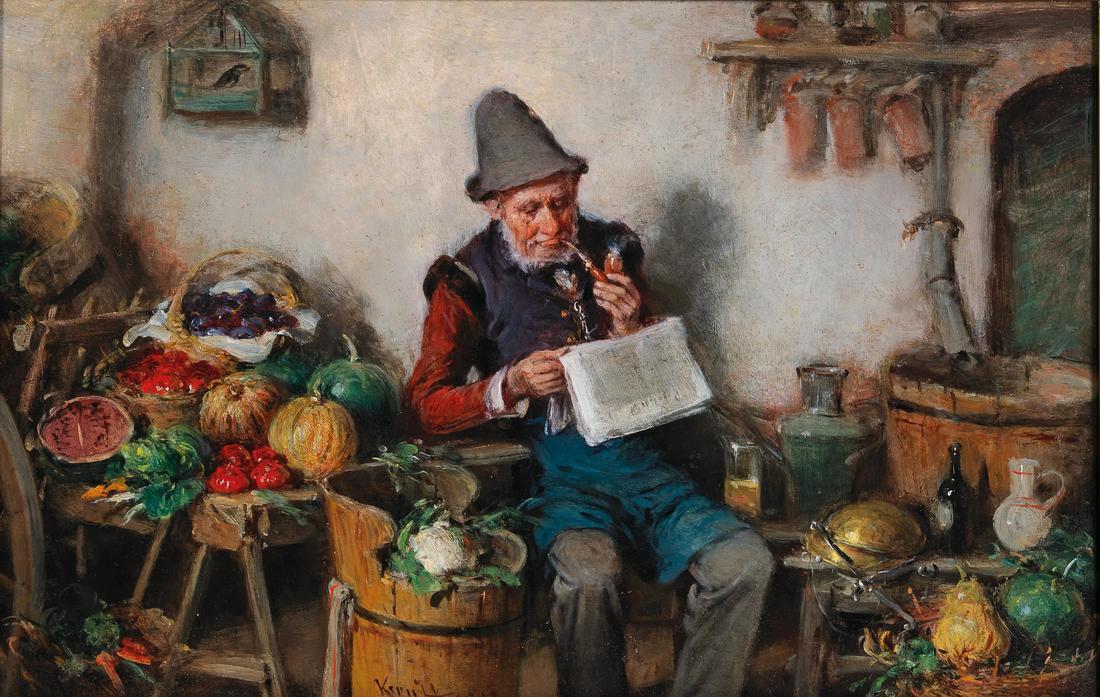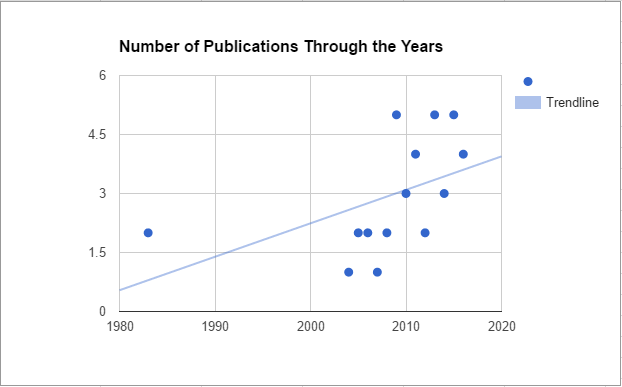Brewing archaeology in Academic JournalsThe article The scholars who look at American History through Beer-Tinted Glasses claimed that an interest in beer history was on the rise. It certainly seems to be happening, what with the amount of talks, conferences, and blogs on the matter. This claim isn't necessarily unique either. Even in his 2006 paper, Alcohol: Anthropological/ Archaeological Perspectives, Dr. Michael Dietler states that a scholarly interest in the history of alcohol was on the rise. It is easy for me to assume this is true. I have payed more attention to the topic now than I did five years ago, which gives my assumptions bias. So to see whether research into alcohol within archaeology is increasing, I’ll be having a look through academic journals to track brewing archaeological articles. This time: Journal of Archaeological Science FindingsSo, it does appear that scholarly pursuits into beer history is indeed on the rise (albeit slowly). There have been only one or two publications up until 2009. After that, it seems the Journal of Archaeological Science publishes 4 - 5 articles about alcohol in archaeology. For whatever reason, 2009 does seem to be the year that kickstarted it all. However, I'll hold off any analysis until after I analyzed more journals. 2016
Pavelka, J. et al., 2016. Immunological detection of denatured proteins as a method for rapid identification of food residues on archaeological pottery. Journal of Archaeological Science, 73, pp.25–35. García Rivero, D., Jurado Núñez, J.M. & Taylor, R., 2016. Bell Beaker and the evolution of resource management strategies in the southwest of the Iberian Peninsula. Journal of Archaeological Science, 72, pp.10–24. Garnier, N. & Valamoti, S.M., 2016. Prehistoric wine-making at Dikili Tash (Northern Greece): Integrating residue analysis and archaeobotany. Journal of Archaeological Science, 74, pp.195–206. Gismondi, A. et al., 2016. Grapevine carpological remains revealed the existence of a Neolithic domesticated Vitis vinifera L. specimen containing ancient DNA partially preserved in modern ecotypes. Journal of Archaeological Science, 69, pp.75–84. 2015 Barton, H., 2015. Cooking up recipes for ancient starch: assessing current methodologies and looking to the future. Journal of Archaeological Science, 56, pp.194–201. Lantos, I. et al., 2015. Maize consumption in pre-Hispanic south-central Andes: chemical and microscopic evidence from organic residues in archaeological pottery from western Tinogasta (Catamarca, Argentina). Journal of Archaeological Science, 55, pp.83–99. Nieuwenhuyse, O.P. et al., 2015. Tracing pottery use and the emergence of secondary product exploitation through lipid residue analysis at Late Neolithic Tell Sabi Abyad (Syria). Journal of Archaeological Science, 64, pp.54–66. Ting, C., 2015. Ancient and Historical Ceramics: Materials, Technology, Art, and Culinary Traditions. Journal of Archaeological Science, 59, pp.219–220. Vieugué, J., 2015. What were the recycled potsherds used for? Use-wear analysis of Early Neolithic ceramic tools from Bulgaria (6100–5600 cal. BC). Journal of Archaeological Science, 58, pp.89–102. 2014 Arobba, D. et al., 2014. Palaeobotanical, chemical and physical investigation of the content of an ancient wine amphora from the northern Tyrrhenian sea in Italy. Journal of Archaeological Science, 45, pp.226–233. Goldenberg, L., Neumann, R. & Weiner, S., 2014. Microscale distribution and concentration of preserved organic molecules with carbon–carbon double bonds in archaeological ceramics: relevance to the field of residue analysis. Journal of Archaeological Science, 42, pp.509–518. Washburn, D.K. et al., 2014. Chemical analysis of cacao residues in archaeological ceramics from North America: considerations of contamination, sample size and systematic controls. Journal of Archaeological Science, 50, pp.191–207. 2013 Gur-Arieh, S. et al., 2013. An ethnoarchaeological study of cooking installations in rural Uzbekistan: development of a new method for identification of fuel sources. Journal of Archaeological Science, 40(12), pp.4331–4347. Pecci, A., Cau Ontiveros, M.Á. & Garnier, N., 2013. Identifying wine and oil production: analysis of residues from Roman and Late Antique plastered vats. Journal of Archaeological Science, 40(12), pp.4491–4498. Pecci, A. et al., 2013. Identifying wine markers in ceramics and plasters using gas chromatography-mass spectrometry. Experimental and archaeological materials. Journal of Archaeological Science. Pető, Á. et al., 2013. Macro- and micro-archaeobotanical study of a vessel content from a Late Neolithic structured deposition from southeastern Hungary. Journal of Archaeological Science, 40(1), pp.58–71. Washburn, D.K., Washburn, W.N. & Shipkova, P.A., 2013. Cacao consumption during the 8th century at Alkali Ridge, southeastern Utah. Journal of Archaeological Science, 40(4), pp.2007–2013. 2012 Foley, B.P. et al., 2012. Aspects of ancient Greek trade re-evaluated with amphora DNA evidence. Journal of Archaeological Science, 39(2), pp.389–398. Reber, E.A. & Kerr, M.T., 2012. The persistence of caffeine in experimentally produced black drink residues. Journal of Archaeological Science, 39(7), pp.2312–2319. 2011 Barnard, H. et al., 2011. Chemical evidence for wine production around 4000 BCE in the Late Chalcolithic Near Eastern highlands. Journal of Archaeological Science, 38(5), pp.977–984. Gong, Y. et al., 2011. Investigation of ancient noodles, cakes, and millet at the Subeixi Site, Xinjiang, China. Journal of Archaeological Science, 38(2), pp.470–479. Milanesi, C. et al., 2011. Microscope observations and DNA analysis of wine residues from Roman amphorae found in Ukraine and from bottles of recent Tuscan wines. Journal of Archaeological Science. Washburn, D.K., Washburn, W.N. & Shipkova, P.A., 2011. The prehistoric drug trade: widespread consumption of cacao in Ancestral Pueblo and Hohokam communities in the American Southwest. Journal of Archaeological Science, 38(7), pp.1634–1640. 2010 Deforce, K., 2010. Pollen analysis of 15th century cesspits from the palace of the dukes of Burgundy in Bruges (Belgium): evidence for the use of honey from the western Mediterranean. Journal of Archaeological Science, 37(2), pp.337–342. Figueiral, I. et al., 2010. Archaeobotany, vine growing and wine producing in Roman Southern France: the site of Gasquinoy (Béziers, Hérault). Journal of Archaeological Science, 37(1), pp.139–149. Isaksson, S., Karlsson, C. & Eriksson, T., 2010. Ergosterol (5, 7, 22-ergostatrien-3β-ol) as a potential biomarker for alcohol fermentation in lipid residues from prehistoric pottery. Journal of Archaeological Science, 37(12), pp.3263–3268. 2009 Heaton, K. et al., 2009. Towards the application of desorption electrospray ionisation mass spectrometry (DESI-MS) to the analysis of ancient proteins from artefacts. Journal of Archaeological Science. Jiang, H.-E. et al., 2009. Evidence for early viticulture in China: proof of a grapevine (Vitis vinifera L., Vitaceae) in the Yanghai Tombs, Xinjiang. Journal of Archaeological Science, 36(7), pp.1458–1465. Namdar, D. et al., 2009. The contents of unusual cone-shaped vessels (cornets) from the Chalcolithic of the southern Levant. Journal of Archaeological Science, 36(3), pp.629–636. Romanus, K. et al., 2009. Wine and olive oil permeation in pitched and non-pitched ceramics: relation with results from archaeological amphorae from Sagalassos, Turkey. Journal of Archaeological Science. Seinfeld, D.M., von Nagy, C. & Pohl, M.D., 2009. Determining Olmec maize use through bulk stable carbon isotope analysis. Journal of Archaeological Science, 36(11), pp.2560–2565. 2008 Hein, A. et al., 2008. Koan amphorae from Halasarna – investigations in a Hellenistic amphora production centre. Journal of Archaeological Science, 35(4), pp.1049–1061. Stern, B. et al., 2008. New investigations into the Uluburun resin cargo. Journal of Archaeological Science, 35(8), pp.2188–2203. 2007 Barnard, H. et al., 2007. Mixed results of seven methods for organic residue analysis applied to one vessel with the residue of a known foodstuff. Journal of Archaeological Science, 34(1), pp.28–37. 2006 Guasch-Jané, M.R. et al., 2006. The origin of the ancient Egyptian drink Shedeh revealed using LC/MS/MS. Journal of Archaeological Science, 33(1), pp.98–101. Margaritis, E. & Jones, M., 2006. Beyond cereals: crop processing and Vitis vinifera L. Ethnography, experiment and charred grape remains from Hellenistic Greece. Journal of Archaeological Science, 33(6), pp.784–805. 2004 Bozarth, S.R. & Guderjan, T.H., 2004. Biosilicate analysis of residue in Maya dedicatory cache vessels from Blue Creek, Belize. Journal of Archaeological Science, 31(2), pp.205–215. Reber, E.A. & Evershed, R.P., 2004. Identification of maize in absorbed organic residues: a cautionary tale. Journal of Archaeological Science, 31(4), pp.399–410. 2003 Manen, J.-F. et al., 2003. Microsatellites from archaeological Vitis vinifera seeds allow a tentative assignment of the geographical origin of ancient cultivars. Journal of Archaeological Science, 30(6), pp.721–729. 1983 Knights, B.A. et al., 1983. Evidence concerning the roman military diet at Bearsden, Scotland, in the 2nd Century AD. Journal of Archaeological Science, 10(2), pp.139–152. Velde, B. & Courtois, L., 1983. Yellow garnets in roman amphorae—a possible tracer of ancient commerce. Journal of Archaeological Science, 10(6), pp.531–539.
0 Comments
|
Jordan RexBeer archaeologist Archives
November 2017
Categories
All
|


 RSS Feed
RSS Feed
